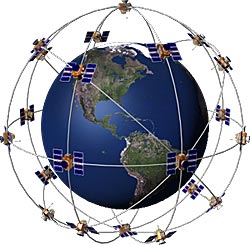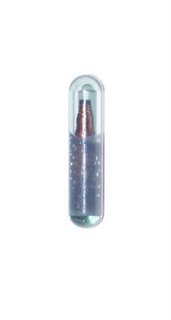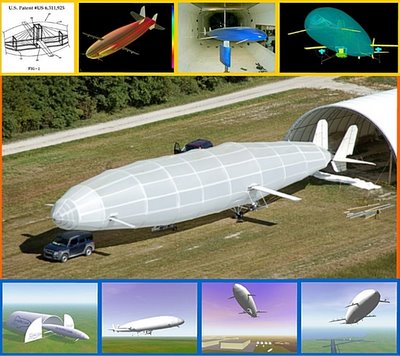Biggest Space Customers
by Louis A. Arana-Barradas
The head of
Air Force Space Command said people might be surprised to learn that corporate America is the biggest user of Air Force space products. Gen. Lance W. Lord said the main reason for this is the reliability of space-based assets and because the technologies -- which are giving coalition forces an edg

e on the global war on terrorism -- can be adapted for use in a variety of civilian applications.
The relationship is lucrative for the civilian sector. The global economic impact of space is an estimated $209 billion, the general said.
Its use in space transportation, satellite communications, global positioning systems, or GPS, and remote sensing contributed $91 billion to the global economy in 2003 and involved half a million jobs in the United States alone.
Plus, command space acquisitions and operations contribute $11 billion annually to the U.S. economy.
"Removing space capabilities from our way of life would not only cripple our combat forces, but it would have catastrophic consequences on our entire economy," General Lord said.
To help maintain a viable space system, General Lord commands the nearly 40,000 space

professionals. They run a global network of satellite command and control, communications, missile warning and launch facilities and maintain the combat readiness of the nation's intercontinental ballistic missile force.
The use of space technologies will only continue to increase in the future. There will also be an increased need to continue coming up with technological advances, the general said. This will help cut the price of doing business in all sectors.
Just another addiction.Civilian Sector Biggest Space Customer
The New Seven Wonders of the World
This website offers you the opportunity to participate in the first-ever global vote to elect the New 7 Wonders of the World.
This vote will culminate with a live, worldwide, telecast on January 1 2007 to announce the New 7 Wonders of the World.
The 21 finalists were
announced January 2006And the nominees are...
 n7w: Home
n7w: Home
Chips Implanted For Love
Jennifer Tomblin and Amal Graafstra have made the most modern declaration of their affection for each other, with implanted electronic chips that allow them unfettered access to each other's lives.
It's called Radio Frequency Identification, or RFID. Both have had a small electronic chip embedded under their skin that grants access to each other's front doors and home computers.

The system works like a key-card. A simple swipe of the wrist across an electronic sensor, and they're in.
The couple sees the decision as a modern declaration of love that also happens to be functional.
The chip itself is just two millimeters by 12 millimetres, and can be inserted under the skin with an injection needle.
The chips are surprisingly inexpensive, not much more than a few U.S. dollars, and can easily be
ordered online.
Like a tattoo, Tomblin said, it's a unique way of connecting with her significant other.
CTV.ca | Couple's implant chips take love to a new level
Bottled Water Kills the Planet
"Even in areas where tap water is safe to drink, demand for bottled water is increasing, producing unnecessary garbage and consuming vast quantities of energy," according to Emily Arnold, author of the study published by the Earth Policy Institute, a Washington-based environmental group.
Arnold said although in the industrial world bottled water is often no healthier than tap water, it can end up costing 10,000 times more.
In terms of consumption per person, Italians came first at nearly 184 liters, or more than two glasses a day, followed by Mexico and the United Arab Emirates with 169 and 164 liters per person respectively.
The study said that demand for bottled water soared in developing countries between 1999 and 2004 with consumption tripling in India and more than doubling in China during that period.
That has translated into massive costs in packaging the water, usually in plastic bottles made of polyethylene terephthalate (PET) which is derived from crude oil, and then transporting it by boat, train or on land.
The study, citing the Container Recycling Institute, said that 86 percent of plastic water bottles in the United States end up as garbage and those buried can take up to 1,000 years to biodegrade.
In addition, some 40 percent of the PET bottles deposited for recycling in the United States in 2004 ended up being shipped to China.
It said that while consumers tend to link bottled water with healthy living, tap water can be just as healthy and is subject to more stringent regulations than bottled water in many regions, including Europe and the United States.
Bottled water, a natural resource taxing the world's ecosystem
Self-cleaning Bathroom
Cleaning bathrooms may become a thing of the past with new coatings that will do the job for you.
Researchers at the University of New South Wales are developing new coatings they hope will be used for self-cleaning surfaces in hospitals and the home.
Led by Professor Rose Amal and Professor Michael Brungs of the ARC Centre for Functional Nanomaterials, a research team is studying tiny particles of titanium dioxide currently used on outdoor surfaces such as self-cleaning windows.
The particles work by absorbing ultraviolet light below a certain wavelength, exciting electrons and giving the particles an oxidising quality stronger than any commercial bleach.
These nanoparticles then kill microbes and break down organic compounds. And because surfaces coated with titanium dioxide have another property called 'superhydrophilicity' -- meaning droplets do not form -- water runs straight off the surface, washing as it goes.
Presently, titanium dioxide can only be activated by the UVA present in sunlight. But the UNSW team is working on ways to activate titanium dioxide with indoor light.
The team is modifying titanium dioxide nanoparticles with other elements such as iron and nitrogen so they can absorb light at longer wavelengths.
Lab trials show that glass coated with the new nanoparticles can be activated by visible light from a lamp to kill Escherchia coli.
"If you've got this on tiles or shower screens you don't need so many chemical agents," says Professor Amal.
So far the team has been working at laboratory scale. "It's probably a year before we can talk to industry and test outside the lab," says Professor Amal.
UNSW: The University of New South Wales - Sydney Australia - News - A bathroom that cleans itself
Telegram Service Ends STOP
The Western Union telegram is officially a thing of the past.
Samuel Morse, inventor of the Morse Code, sent the first telegram from Washington to Baltimore on May 26, 1844, to his partner Alfred Vail to usher in the telegram era that displaced the Pony Express. It read "WHAT HATH GOD WROUGHT?"
The company formed in April 1856 to exploit the hot technology of the telegraph to send cross-country messages in less than a day.
Several telegraph companies eventually combined to become Western Union. Western Union built its first transcontinental telegraph line in 1861.

Telegrams reached their peak popularity in the 1920s and 1930s when it was cheaper to send a telegram than to place a long distance telephone call. People would save money by using the word "stop" instead of periods to end sentences because punctuation was extra while the four character word was free.
During World War II, the sight of a Western Union courier was feared because the War Department, the precursor to the Department of Defense, used the company to notify families of the death of their loved ones serving in the military.
By last year, only 20,000 telegrams were sent at about $10 a message, mostly from companies using the service for formal notifications, Chayet said.
Last week, the last 10 telegrams included birthday wishes, condolences on the death of a loved one, notification of an emergency, and several people trying to be the last to send a telegram.
Western Union -STOP- Ends Telegram Service | Chron.com - Houston Chronicle
Blimp-Plane Hybrid
"Dynalifter is a hybrid aircraft," said Robert Rist, a co-founder of
Ohio Airships Inc., the Mantua-based company that built the aircraft. "The only comparison [with a blimp] is that they both use helium."
Unlike a blimp, the Dynalifter has wings and is a heavier-than-air aircraft. Its weight is carried by aerodynamic lift on the wings and hull and is augmented by helium lift.
The prototype airship, which Rist and his business partner Brian Martin hope to test fly this spring, is one-eighth the size of their ultimate goal: a 990-foot-long (300-meter-long) Dynalifter.

Such a craft could move materials at a lower cost than airplanes and at higher speeds than ships, they believe. It could also deliver supplies to hard-to-reach places, making it especially useful in military and emergency situations.
They initially based their model on an idea for a hybrid aircraft conceived by aviation tycoon Howard Hughes. Hughes's project, known as the Clark Megalifter, was scrapped after his death.
Blimp-Plane Hybrid: World's Next Megamover?
 e on the global war on terrorism -- can be adapted for use in a variety of civilian applications.
e on the global war on terrorism -- can be adapted for use in a variety of civilian applications. professionals. They run a global network of satellite command and control, communications, missile warning and launch facilities and maintain the combat readiness of the nation's intercontinental ballistic missile force.
professionals. They run a global network of satellite command and control, communications, missile warning and launch facilities and maintain the combat readiness of the nation's intercontinental ballistic missile force.





